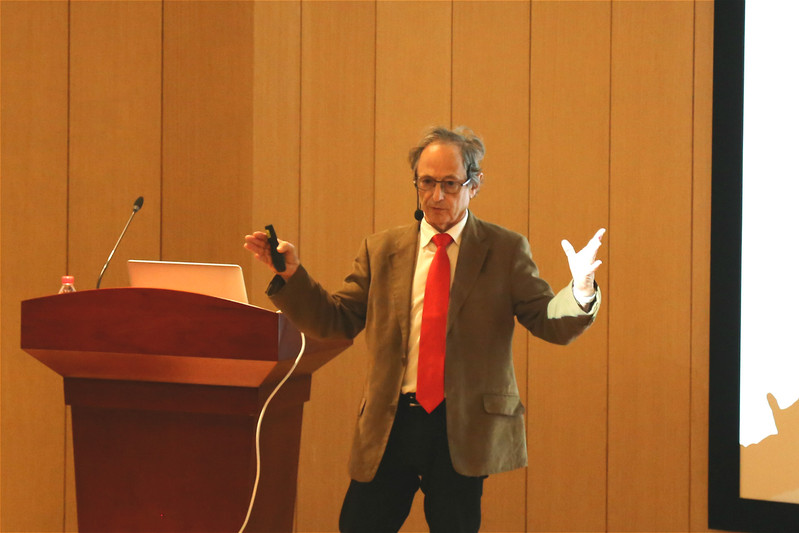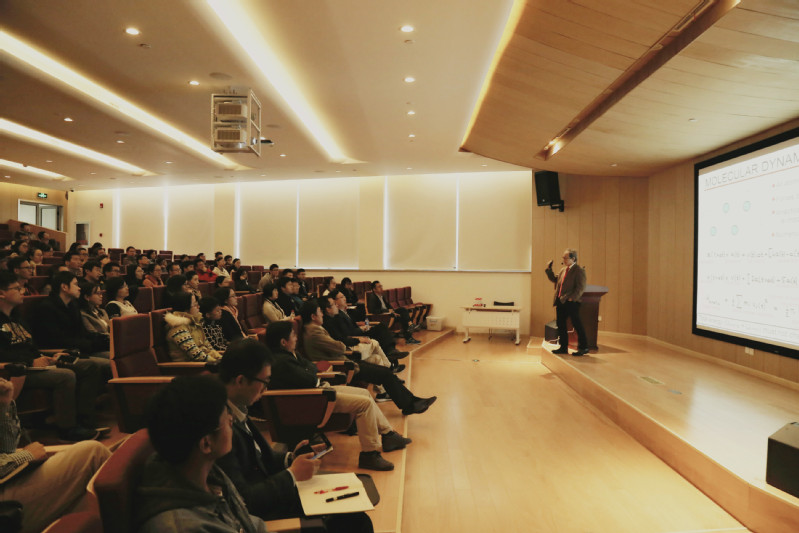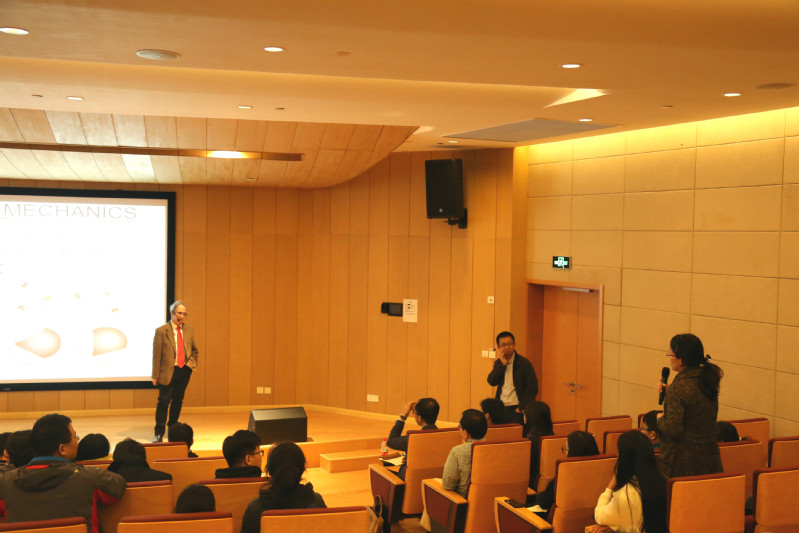On October 31st, Michael Levitt, the Professor of Structural Biology at Stanford University and the 2013 Nobel Laureate in Chemistry, visited School of Life Science and Technology (SLST) at ShanghaiTech University and gave a fascinating lecture entitled, “Hybrid Multiscale Models for Simulating Functional Motion in Macromolecular Complexes”.
Prof. Levitt, one of the pioneers to utilize computational methods to simulate molecular dynamics, told us an interesting phenomenon at the beginning of the lecture. Even though the computer in biology has been growing up very slowly, nowadays people has realized that the truth is between experiments and computation. In this lecture, Prof. Levitt introduced two methods to do simulating: Molecular Dynamics and Normal Mode Dynamics. He also showed the past, present and future of dynamic simulation.
In the first part, Prof. Levitt revealed the three key elements in molecular dynamic simulation: energy, forces and motions. We can get the force in any direction by seeing how the energy changes, and from these forces, we can calculate motions. After that, he introduced several groundbreaking works in the last century: to simulate liquid argon, water, and the first protein molecular dynamics. During the period when computational capability was limited, it took his team almost 10 years to merge the protein and water models, which was a breakthrough in computational biology.
Later, Prof. Levitt explained the concept of Normal Mode Dynamics, which is an approach to obtain vibration models by simply considering proteins as springs. The biggest difference between these 2 methods is that we solve the exact equations of motions approximately in regular Molecular Dynamics whilst in Normal Mode Dynamics, we solve the approximate equations of motions exactly.
It is often said that structure determines its function. Nevertheless, it’s still much harder to gain its functional information in molecular level even we know every detail of its structure. Prof. Levitt took ribosome as an example to introduce his work of simulating functional motion. His lab collected hundreds of different X-ray crystal structures of ribosome and put them together in order just like editing every frame of a film. Eventually, they reproduced its conformational motions and established the predicted dynamic model of ribosome.
The field of simulation has been developing for more than 60 years. With great resources and powerful computers, Prof. Levitt has high expectations for the future of simulation. Besides, quantum mechanics has cut a figure in this field, which provides more useful complements for macromolecular dynamics.
In the Q&A session, there was a heated discussion focusing on quantum dynamic simulation and simulating functional motion. These frontiers have attracted intensive attentions from both teachers and students in ShanghaiTech. This session brought a wonderful end to the lecture.





